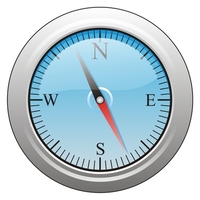Strategies and goals can give you and your business a pathway to success. Yogi Berra said “if you don’t know where you are going, you’ll end up someplace else”. Market, industry and other conditions can change quickly, so it is difficult to develop a strategy  that is 100% guaranteed to succeed. A strategic plan is more of a theory, hypothesis or educated premise based on your knowledge, experience and observations of what you think will work. Therefore, a strategic plan my not offer a direct straight line to success, but it is much straighter than going in circles or without any direction at all. The following offers a process for small business strategic planning.
that is 100% guaranteed to succeed. A strategic plan is more of a theory, hypothesis or educated premise based on your knowledge, experience and observations of what you think will work. Therefore, a strategic plan my not offer a direct straight line to success, but it is much straighter than going in circles or without any direction at all. The following offers a process for small business strategic planning.
CURRENT STATE ANAYLYSIS
The first thing you will want to do is perform a current state analysis so you will know where you are. In other words, what is your starting point? Questions to ask and answer include: Who are our customers? What industry sectors or demographic do they represent? What percentage of our business comes from each customer sector or demographic? Who are our competitors? How do we market our business? What trends do we see in our industry? What is our financial situation?
Note: Excellent financial record keeping and customer information is very useful in the current state analysis phase.
ANALYSIS OF STRENGTHS, WEAKNESSES, OPPORTUNITIES AND THREATS
Strengths and weaknesses are generally issues internal to your business. Typical issues analyzed include location, financial condition, longevity of business, customers, vendors, networking relationships, marketing methods, quality of product or service, technology use, methods of doing business, intellectual property, employees, skill, education and more.
Opportunities and threats are generally issues external to your company. Typical issues analyzed include competitors, industry trends, demographic trends, technological trends, laws, regulations, workforce availability and more.
Note: Your analysis should be honest and relevant. For example, if you are a small manufacturing business in Oklahoma, you shouldn’t compare yourself to General Electric as a competitor. Compare yourself to other small manufacturers that are serving the same market or have similar product and service offerings.
MISSION OR VISION STATEMENT
Based on the analyses above, prepare a mission or vision statement. This statement should provide some general direction and be relevant and attainable. In 2 or 3 lines, it should answer these questions: What does our company do? What markets do we want to serve? What geographic area do we want to cover? How will this be accomplished? For this answer, list a couple of your core values like honesty, integrity, exceptional workplace, etc. Finally, why does our company do what it does? What is the purpose?
Note: Be careful not to have a grandiose or overly ambitious mission statement full of fluffy words. If you are a small service business in Oklahoma, a statement like “we are going to have 100% world-wide market share by leveraging our diverse paradigms and synergies” is probably not going to work and offers no real direction.
GOALS
Now it is time to develop goals that support your mission statement and considers your current state and strengths, weaknesses, opportunities and threats. For focus, small businesses should limit themselves to 1 or 2 goals. Like the mission statement, the goals should be relevant and attainable, yet challenging. They should be specific for focus and have a metric assigned with a due date. That way the goal will have some priority and you will know when it is achieved.
Note: The SMART goal format is a good one to follow. SMART = Specific, Measurable, Attainable, Relevant and with a Timeline.
STRATEGIES WITH ACTION STEPS
Strategies are how you will go about meeting your goals. For example, to increase sales you might develop a specific marketing strategy, develop new products & services or acquire another business. For cost reduction goals, you might do a process analysis to drive out waste from your operations, have a vendor review to try and find lower prices or investigate the use of technology to increase efficiencies.
To these strategies add specific action steps that define the responsible person for the action along with a due date for completion. Make sure the action steps are ordered and prioritized in a way that is efficient and makes sense.
Note: We have found that this is the most difficult phase for small businesses. This phase requires you to go from thinking, talking and writing to doing. Bad strategic plans have a lot of goals, dreams and fluffy words, but limited actions and results. Stay focused and stay active.
SUMMARY
Strategic planning is an important process for small businesses. However, markets and conditions change rapidly, so remain flexible. You will also learn more information as you analyze and pursue action steps. Adjustments may need to be made based on these learnings as well. Strategic planning does not offer a perfectly straight line to success, but it is much more effective than going in circles or doing nothing.
For help with strategic planning, contact us today.

